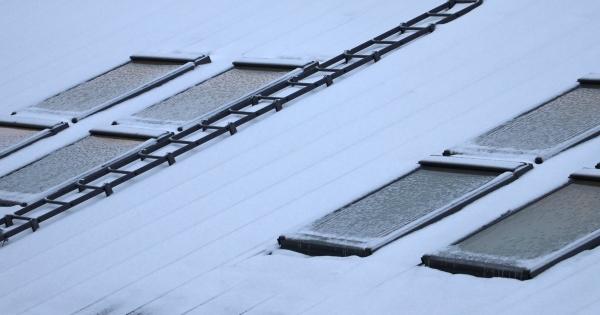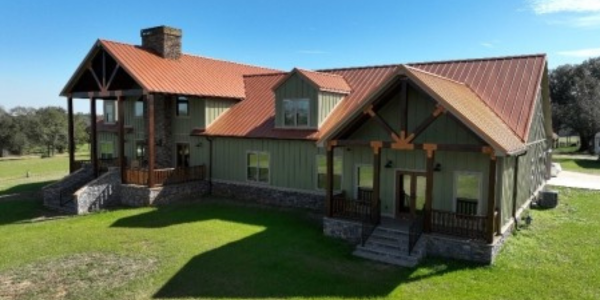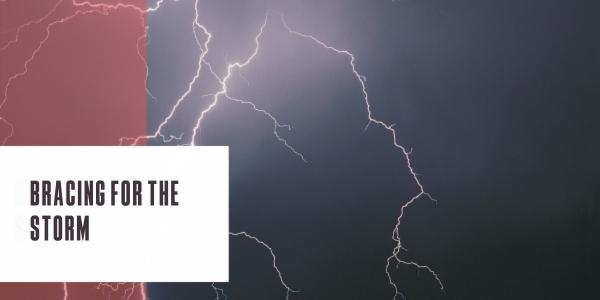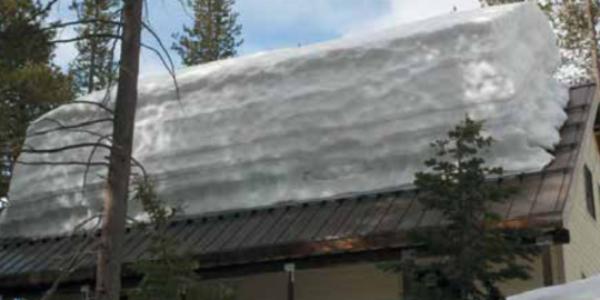Protecting Flat Commercial Roof From Snow and Ice

If you service buildings in a wintry climate, encouraging owners to take steps to protect their roofs from ice and snow can save them a lot of money, effort, and energy.
Building owners often take for granted the work roofs do for them in winter. While they stay safe from routine events like snow and ice storms, the roofs above their heads bear the brunt of the elements. But the work they do takes its toll over time. Snow and ice accumulation can have devastating effects on a commercial roof, causing damage to roofing materials and weakening structural components. In this article, we'll discuss the hazards the roof faces in winter, and how owners can prepare for them.
Areas most at risk of snow and ice damage to roofs
Buildings that are situated anywhere that sees temperatures below freezing during colder months are vulnerable to the hazards of snow and ice damage. These areas include most northern states, as well as the Midwest and parts of the South. Most mountainous areas, such as the Rockies, the Appalachians, the Sierra Nevadas, and the Cascades, are also prone to heavy snowfall. Areas of the northeast, such as New York, New Jersey, and Massachusetts, as well as upper midwestern states like Michigan, Minnesota, and Wisconsin, see a substantial amount of wintertime roof damage because of the heavy concentration of commercial buildings there.
Snow and ice damage, however, is not limited to predictably colder climates. In fact, unusual winter weather events in typically warm or dry climates can be devastating, as building managers often neglect to prepare their roofs for ice and snow accumulation.
The effects of snow and ice on a commerical roof
Snow and ice are surprisingly versatile in their ability to compromise a commercial roof. Here are the most common hazards they present:
Excessive snow load and potential collapse
One cubic foot of snow typically weighs about 12 pounds, and can weigh as much as 20 pounds. To put that in perspective, a 10,000-square-foot warehouse, after a storm that drops six inches of snow, may be bearing anywhere from 30 to 50 tons of snow. This stress is even greater in especially cold climates, where multiple snowfalls may accumulate before temperatures can rise enough to melt snow.
This kind of weight puts tremendous strain on a roof, damaging load-bearing components and sometimes causing total collapse, which can result in serious injury and costly damages.
Weakened roofing materials
Snow and ice, like any kind of moisture, can quickly deteriorate roofing materials. It can bend and buckle flashing, widen gaps in seams and joints, and exacerbate other weaknesses, such as membrane cracks or depressions in the surface.
Freeze and thaw cycles
As accumulated snow melts, the water that runs off of it may find its way into even the smallest gaps in the roof structure, especially around panel seams, flashing, joints, and curbs. This provides the pathway for water to travel beneath the roofing membrane. When the temperature drops below freezing again, this water will expand as it becomes ice, widening these gaps and compromising the integrity of the roof. Every time the gap widens, it allows more water in during the next melt, causing exponentially more damage with each cycle.
Ice dams
Water will often collect at the edges of the roof during a melt, creating what is called an ice dam as it refreezes. Ice dams prevent future melt runoff from draining properly, causing pooling, stress, and further ice damage to the roofing as this ice dam grows.
Pooling and leaks
Water from melting snow will accumulate in any depressions in the roof and leak through any unsealed or newly created gaps. This hazard is only compounded by the other dangers we've discussed.
How to protect a commercial roof from snow and ice
Snow and ice accumulation can cause considerable damage to a flat or commercial roof, but there are things you can do to protect from damage and extend the life of the roof.
Inspect annually for vulnerabilities and trouble spots
Before each winter, check the roof for any issues that could make it susceptible to snow and ice damage. Repair any gaps around seams, joints, and flashing, as well as any rooftop equipment. Address any damage to the membrane, especially around curbs and drainage sites, and check for any buckling or damage to structural components. If the roof is in need of substantial repair, the owner may save money down the road by performing at least a partial if not full restoration to shore it up for wintertime performance.
Know the roof's weight limits and check for warning signs of structural damage
It can be difficult to know just how much weight a roof can bear, but there are some clear signs of damage from excessive load. Check the ceiling for any sagging or cracks, and look for bowing in load-bearing beams and walls. Displaced lighting, pipes, air ducts, and ceiling tiles may also indicate a compromised roof. Additionally, substantial depressions in the roof, or any leaking, could point to serious damage. Structural deficiencies in the roof should be fixed immediately. Correcting these prior to coating can typically save money and aggravation.
Know when to remove snow from the roof
Even if the building is not showing signs of structural roof damage, it is important not to let snow and ice accumulate beyond its load-bearing capacity. The longer that snow builds up on the roof, the more damage it may do. After large storms, or long periods of below-freezing temperatures, snow may need to be removed. When removing snow, it's important to take proper safety precautions, and to use techniques that will not harm the roof.
Use de-icing and melting materials that will not damage the roof
Having to remove snow from the roof can be prevented with the use of de-icing and melting materials and equipment. However, using products that are not compatible with roofing materials can cause even more damage. Before using de-icing chemicals, check to make sure they won't cause deterioration in roofing materials.
Clear gutters for proper drainage
It's always a good idea to keep drainage systems clear, but it's especially important when it comes to snow. Any other precautions taken are pointless if the water has nowhere to go after a melt.
Protect the roof with a coating system
As we've discussed, snow and ice will worsen any flaws in a commercial roof, and moisture will always find a way to exploit those flaws. One of the best things to protect the roof is to apply a coating system that will shield it from moisture penetration. This measure is especially effective at preventing damage from freeze and thaw cycles, and has the added benefit of protecting the roof year-round, not just during winter.
Conclusion
Winter in cold climates can wreak havoc on commercial roofs, straining load-bearing elements, weakening roofing components, and resulting in leaks. With proactive care and attention, however, you can prepare your customers' roofs to significantly help prevent damage from snow and ice. Annual inspections, routine cleaning and maintenance, and a properly applied coating system can help their roofs weather many winters to come.
Discover the benefits of becoming a Topps® Certified Installer and follow us on Twitter, Facebook, and Instagram as well.
Original article source: Topps Products






















Comments
Leave a Reply
Have an account? Login to leave a comment!
Sign In